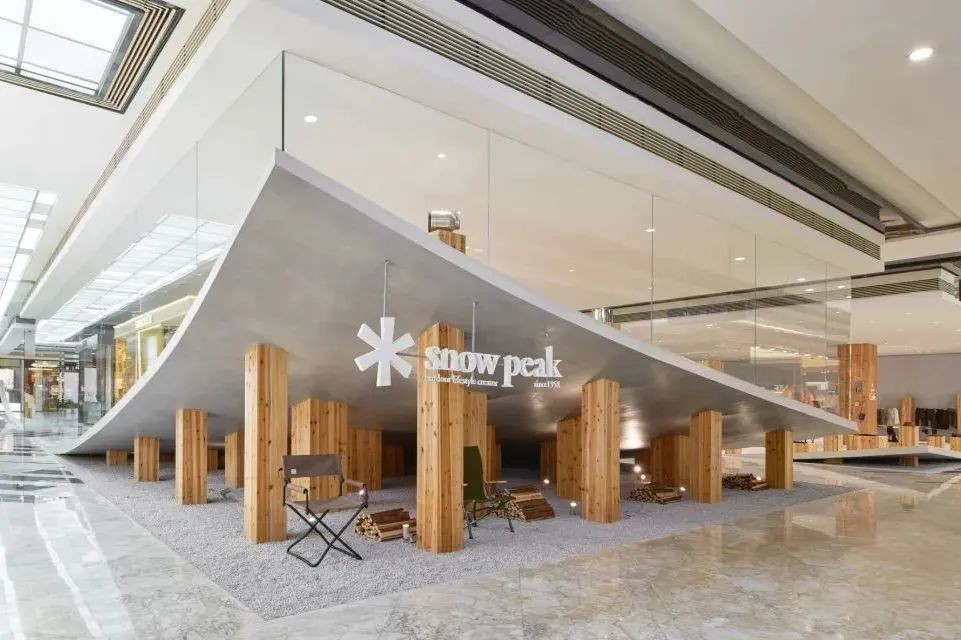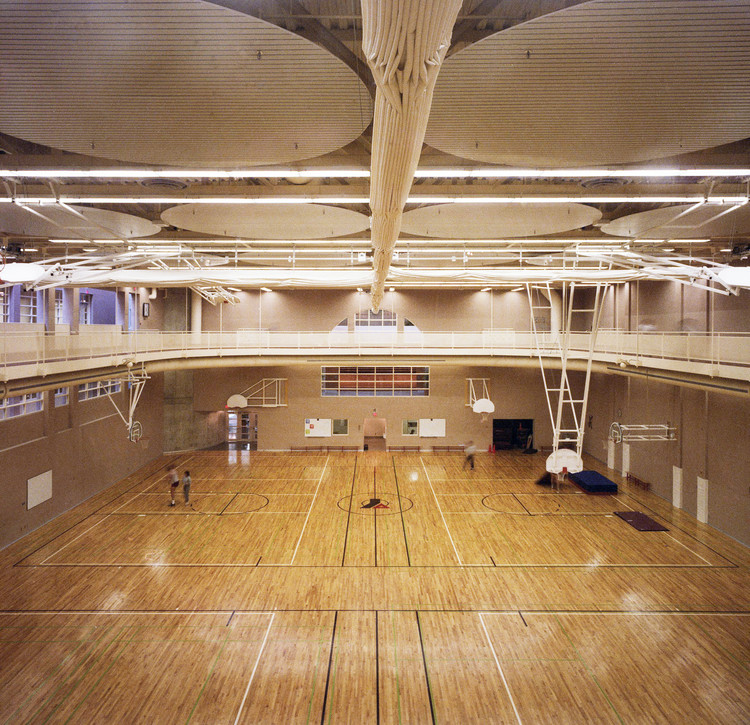Luanda Multisports Pavilion Berger Arquitectos
2014-11-06 01:00
© Fernando Guerra | FG+SG
费尔南多·格拉


架构师提供的文本描述。安哥拉在过去十年中一直在经历一个引人注目的发展进程,显示出其人口的经济显著增长和生活质量的逐步改善。它是非洲大陆范围内的一个关键国家,也是促进该区域和平与繁荣的重要区域力量。
Text description provided by the architects. Angola has been undergoing a remarkable development process for the last decade, showing a significant economic growth and a progressive improvement in the quality of life of its population. It is a key country in the context of the African continent and an important regional power for the promotion of peace and prosperity in the region.
© Fernando Guerra | FG+SG
费尔南多·格拉


它的首都罗安达是一个充满活力和国际化的城市,反映了正在向全国蔓延的新现实。
Its capital city, Luanda, is a vibrant and cosmopolitan city, mirroring the new reality that is spreading to all of the country.
© Fernando Guerra | FG+SG
费尔南多·格拉


在这方面,安哥拉被选为2013年第一个主办溜冰场曲棍球世界杯的非洲国家,该展馆被设计为该活动的主要场地。
In this context, Angola was selected to be the first African nation to host the Rink Hockey World Cup in 2013, and the pavilion was designed as the main venue for the event.
© Fernando Guerra | FG+SG
费尔南多·格拉


除了需要容纳12000名观众和建筑物应具有作为活动主要标志的标志性特征外,在设计中还考虑到了其他几个问题,例如:
Alongside with the required capacity for 12000 spectators and the iconic character that the building should have as the main symbol of the event, several other concerns were taken into consideration in the design, such as:
Floor Plan
.jpg)

-时间和预算限制,导致优化设计,广泛使用低成本、模块化的要素,可以外包并迅速在现场组装;
-The time and budget constraints, which led to an effort of optimization of the design, making extensive use of low cost, modular elements that could be outsourced and quickly assembled on site;
© Fernando Guerra | FG+SG
费尔南多·格拉


© Fernando Guerra | FG+SG
费尔南多·格拉


-除体育活动外,还需要容纳不同的体育项目、多个训练场和其他类型的活动,这导致了可伸缩座位的部分使用,以便能够进行广泛的布局;
-The need to accommodate different sports events, multiple training fields and other kinds of events besides sports, which led to the partial use of retractable seating, in order to allow a wide array of layouts;
© Fernando Guerra | FG+SG
费尔南多·格拉


-能够主办世界级活动的场地所需的国际安全和舒适标准,以确保观众的最佳观看条件、所有辅助设施以及在正常情况和紧急情况下的方便和直观的循环;
-The international safety and comfort standards required for a venue able to host world class events, in order to ensure the best viewing conditions for spectators, all the auxiliary facilities, and easy and intuitive circulations, both in normal conditions and in emergency situations;
© Fernando Guerra | FG+SG
费尔南多·格拉


-能源效率,最大限度地利用被动解决方案,用于舞台和主要公共区域的冷却和通风。
-The energy efficiency, by maximizing the use of passive solutions for cooling and ventilation of the arena and main public areas.
© Fernando Guerra | FG+SG
费尔南多·格拉


因此,设计过程的主要目标是寻求对这些关切问题作出最有效和最具成本效益的反应,使美学选择成为技术和功能方面的一个合乎逻辑的结果。
The main goal of the design process was, thus, to search for the most efficient and cost effective response to these concerns, making the aesthetical options as a logical consequence of the technical and functional aspects.
© Fernando Guerra | FG+SG
费尔南多·格拉


该建筑分为4层,最低一层是地下,可容纳所有体育赛事的技术区和辅助空间,如更衣室和运动员训练区、场地储藏室、停车场和安全出口。这一层的形状就像一个台阶的平台在外面,允许方便进入所有周边的建筑在地面水平。
The building is organized in 4 levels, the lowest one being underground and housing all the technical areas and auxiliary spaces for the sports events, such as locker rooms and training areas for athletes, storage, parking and safety exits from the arena. This level is shaped like a stepped podium on the outside, allowing easy access to all the perimeter of the building at ground level.
Floor Plan
.jpg)

地面水平是广泛的玻璃和集中所有公共入口和主流通画廊-一个环周围的竞技场-提供进入看台和他们的所有辅助空间。三分之二的看台座位可以从这一层进入,不需要使用楼梯或电梯。其余的看台座位位于第二层,可通过从展厅上爬上的楼梯进入。第一层是所有贵宾区和媒体区,可直接从外部进入,贵宾入口被标记为主门面上的盒形凸起。
The ground level is extensively glazed and concentrates all the public entrances and the main circulation gallery - a ring surrounding the arena - giving access to the grandstands and to all their auxiliary spaces. Two thirds of the grandstand seats are accessible from this level, without any need for the use of staircases or lifts. The rest of the grandstand seats are located on the second level, and are accessible by staircases going up from the gallery. The first level houses all the VIP and media areas, and is accessible directly from the outside, with the VIP entrance being marked as a box protrusion on the main façade.
© Fernando Guerra | FG+SG
费尔南多·格拉


所有的水平流通的上层展馆被组织成外围的外部画廊。罗安达的气候特点使这一解决方案成为可能,减少了封闭溶液所意味的能源消耗,并利用这些画廊作为内部空间自然通风的一个积极因素,并作为抵御这些因素的第一道防线。
All the horizontal circulations of the upper levels of the pavilion are organized as peripheral external galleries. The climatic characteristics of Luanda make this solution possible, reducing the energy consumption that an enclosed solution would imply, and using the galleries as an active element in the natural ventilation of the internal spaces and as a first line of protection against the elements.
© Fernando Guerra | FG+SG
费尔南多·格拉


为了确保这一解决方案的有效性,我们需要保证画廊的阴影,并减少它们在风雨中的暴露。为此目的,我们开发了模块化的元素,包括一个金属结构,提供支持张孔帆布-所谓的“帆”。
In order to ensure the effectiveness of this solution, we needed to guarantee the shading of the galleries and to reduce their exposure to wind and rain. For that purpose we developed modular elements, comprising a metallic structure that gives support to a tensioned perforated canvas – the so called “sails”.
© Fernando Guerra | FG+SG
费尔南多·格拉


然而,它们的模块化是由将这些元素作为“尺度”放置而产生的,根据观察到它们的不同角度,它们似乎是孤立的实体,暴露内部空间,或相互重叠,隐藏它。通过在每个元素的外部边缘加上一个顶点,以及放置在其中的高度的变化来补充这一效应。这导致了一个起伏的格局,似乎包围了整个展馆。
Their modularity is, however, animated by the placement of these elements as “scales” that, according to the different angles from which they are observed, seem to be isolated entities and expose the interior space, or overlap each other, hiding it. This effect is complemented by the addition of a vertex to the outer edge of each element, and by the variation of the height in which it is placed. This results in an undulating pattern that seems to envelop the entire pavilion.
Floor Plan
.jpg)

这些元素所接收到的LED照明在夜间进一步强化了这种形式效果,具有不同的颜色和强度,更多地表达了展馆的标志性特征。
The LED lighting that these elements received further reinforces this formal effect at night, with varying color and intensity, giving even more expression to the iconic character of the pavilion.
© Fernando Guerra | FG+SG
费尔南多·格拉
















































































.jpg)

.jpg)

.jpg)

.jpg)

.jpg)

.jpg)

.jpg)



.jpg)

.jpg)

.jpg)

.jpg)

.jpg)

Architects Berger Arquitectos
Location Luanda, Angola
Category Stadiums
General Coordination and Architecture Francisco Berger, Miguel Berger, Nuno Fialho, Paulo Simões, Rodrigo Silvestre, Tiago Calais, Sérgio Calais, Sérgio Catalão, Claúdia Leal, Miguel Outeiro, Bruno Madaleno, Diana Peralta
Area 30000.0 m2
Photographs Fernando Guerra | FG+SG
Manufacturers Loading...
























